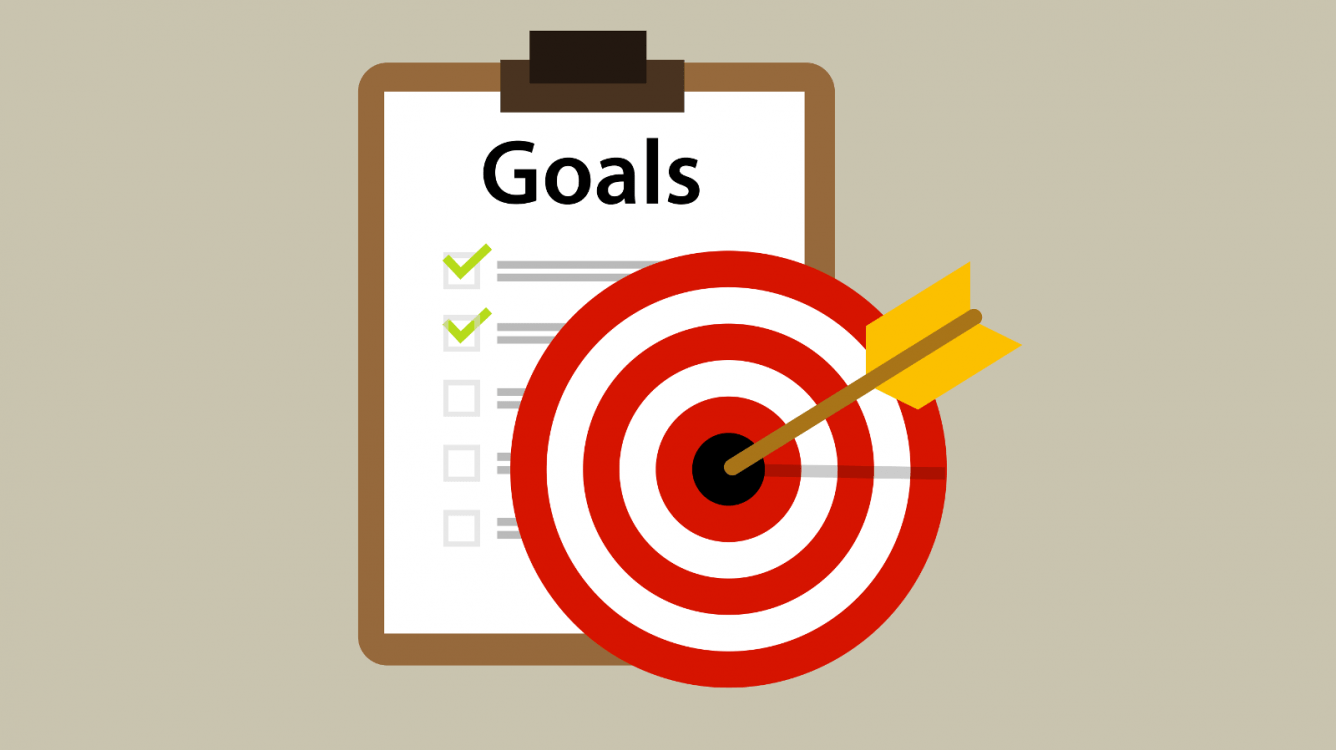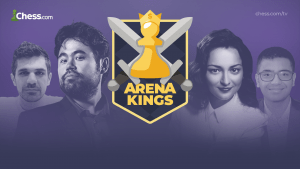
Study Plan For Intermediate Players: Bringing It All Together!
Target Skill Range: Intermediate (Rated 1400-1799)
Put your skills into practice, and use everything you've learned to win chess games!
Tasks:
- Play in 20 chess tournaments (100 rated games).
- Learn to analyze your own games.
- Publish your analysis for critique.
- Go "hurdle hopping" and build your mental discipline.
- Do the 15-minute drill.
- Complete these steps for practical review.
- Work on your visualization skills.
- Complete this lesson.
- Take the quiz!
Leverage your practical skills, psychological strength, emotional discipline, and mental stamina - and break through to the next level!
This course should be started only after you have made (at least) some significant progress in the previous Plans on Openings, Tactics, Strategy, and Endgames.
1. Play in 20 chess tournaments (100 rated games).
Simply put, you are not serious about improving as a chess player unless you are playing in "over the board" tournaments and analyzing your games. Period! Even grandmasters—who have obviously been professionally serious about chess for most their lives—will tell you that once they stopped actively playing in tournaments (whether to teach more, retire from competition, or simply to enjoy their family life)—they were no longer serious chess players.
The intensity of the games in tournament competition cannot be replicated online (as much as it's bad for our business to tell you that  ). You can increase your knowledge, build your work ethic, and improve your skills to the point where you feel ready for tournaments with online tools and coaching, but your most valuable experiences will come from the competitive environment of rated tournament chess!
). You can increase your knowledge, build your work ethic, and improve your skills to the point where you feel ready for tournaments with online tools and coaching, but your most valuable experiences will come from the competitive environment of rated tournament chess!
Search for chess clubs in your area. Get started today!
2. Learn to analyze your own games.
To accompany Task #1, and benefit fully from your tournament experience, you must learn to analyze your games. Here you will begin building the muscles of self-critique and rigorous analysis.
Your assignment is to establish one mistake in every game you play. One clear and undeniable mistake that you are sure to learn from for future battles. To be sure that you have found a mistake, you must follow these steps during analysis
- If the move is a mistake, then you must find a better move that could have been played in the position under review.
- Show/prove the "better move" with variations (and/or convincing verbal explanation regarding the position) that display why the other move would have been superior to the one you played.
- Extrapolate the chess "idea" that you have learned from this position by recognizing the mistake and establishing the better move. This "idea/concept" may be something very specific about the particular position, or something more general to do better in future chess games.
- Examples: "This move was better than what I played because it was the only way to save my queen" or "This move was better because it could have trapped my opponent's knight", etc. Or something more general might look like this: "This move was better because I should complete my development and connect my rooks before I move a piece twice" or "The move I played was a mistake because it weakened the light squares around my king", etc.
- Finally, clarify what were the stakes of your mistake and the "better move". Did this move lose the game on the spot, or did you still have fighting chances? This is important for mental clarity and because it's important to be completely honest with yourself about when/how you are losing (or even winning) your chess games.
3. Publish your analysis for critique.
Publish an analyzed game (from Task #2) in one of our public forums, explaining to other members what steps you went through when analyzing the game, and asking them for their honest feedback and opinions of your approach and analysis. Ask them to find mistakes you may have made, things you may have missed, and/or any other comments they might have to offer.
Repeat this process with 1 out of every 10 games you play, and enjoy the discussion with other chess players for as long as the forum topic is active.
4. Go "hurdle hopping" and build your mental discipline.
The following "practical" assignments apply only if you are actively engaged in tournament practice. Assuming you are roughly mid-way through Task #1 (or have at least have 20 rated tournament games under your belt) then you have likely experienced the difficulties of engaging yourself fully in your chess games when "real life" happens all around you.
Maybe you are someone who finds ways to continue "beating yourself up" over a previous loss and therefore do not play your best with the game in front of you? Perhaps you're making blunders due to lack of focus and you are distracted easily by silly things? Or maybe, you simply struggle with confidence when facing an 8-year old whose more than 400 points higher rated than you?
Whatever your particular "hurdles" are (as all chess players have mental hurdles until they don't anymore), your assignment is to actively force yourself to complete each one of our practical tasks below in order to build your mental discipline and focus.
Play one tournament game where you:
- Don't think about losing at all. No fear! literally choose plans of attack with absolute disregard or fear for what your opponent might be up to. Calculate accurately and attempt to stop your opponent's threats, but go for the kill!
- Don't look at your opponent's rating on the pairings sheet before the game, and don't think about your opponent's rating at all during the game.
- Don't think about your rating during a game!
- Play confident chess, with no worries, immediately after losing a previous game.
- Don't think about work, family, homework, or any life outside of chess at all. Focus yourself completely on the task at hand!
5. Do the 15-minute drill.
Read this article: The "Legendary" 15-Minute Drill by IM Daniel Rensch
After doing exactly as the article says and completing the five drills, it's time to put the principles of this training method into practice. Find a motivated friend or study partner, preferably someone as ambitious about their chess goals as you are, to help you with further drills.
Create a series of five positions of your own, to drill your friend. Critical moments from your own games are a good source of material. Your friend/partner should assemble his/her own list of positions and return the favor by testing you.
6. Complete these steps for practical review.
Read these articles on practical chess concepts and psychology:
- Responsibility versus Apathy by IM Bryan Smith
- Balancing on the Edge by IM Bryan Smith
- Untenable Jadedness by WIM Iryna Zenyuk
- A Library of Positional Pictures by WIM Iryna Zenyuk
- When the Clock Tickles by WIM Iryna Zenyuk
- How to Play a Tournament by WIM Iryna Zenyuk
Watch these videos:
- Live Sessions Library Watch at least 5 live sessions of your choosing.
- Member Analysis: Fighting for the Initiative by GM Dejan Bojkov
- Member Analysis: Ratings DON'T Matter! by GM Roman Dzindzichashvili
- Member Analysis: Absence of Logic by GM Roman Dzindzichashvili
- Member Analysis: Super Sharp Struggle by GM Roman Dzindzichashvili
- Member Analysis: Ignoring General Principles by GM Roman Dzindzichashvili
- Member Analysis: Misplaying Middlegame Positions by GM Roman Dzindzichashvili
- Member Analysis: Finding (and Using) Your Advantages by IM David Pruess
- Member Analysis: Exigentsky v. Clarosdajang by GM Roman Dzindzichashvili
- Member Analysis: Instructive Member Game by GM Roman Dzindzichashvili
- The Road to Chess Improvements by GM Roman Dzindzichashvili
- No Exceptions by GM Roman Dzindzichashvili
- Member Analysis: Instructive Games 2 by GM Roman Dzindzichashvili
7. Work on your visualization skills.
Complete these tasks alone or with a partner where needed:
- If you haven't already, memorize the board! The color of each square named should be known within 3 seconds of being asked... "g3!"
 (You should certainly be able to record your games accurately, playing either White or Black, on a board with no printed coordinates on the sides.)
(You should certainly be able to record your games accurately, playing either White or Black, on a board with no printed coordinates on the sides.) - Without looking at a board and/or moving the pieces, complete the following:
- Move a bishop from d1 to g8, naming every square crossed along the diagonals you use.
- Move a knight from a1 to g8 as fast as possible.
- Name every square a rook on d6 attacks.
- Have a partner continue testing your vision in this way (naming a piece and the square its on and asking you to name all the squares it attacks).
- Complete this "Soviet Chess School" visualization drill with a friend/study partner:
- Turn your back on a blank chess board;
- Your partner should place three pieces (Rook, Knight and Bishop) of the same color on the chess board, with at least one of them being defended by another;
- Your partner tells you where the pieces are;
- Once you know what the original position is, your partner moves one of the pieces and tells you where he moved it;
- You now tell your partner if any of the pieces are still defending one another. Tell your partner which piece(s) is still defended by naming that piece and the square it's on. If no pieces are defended you say "pass" and your partner will move the pieces again;
- Continue this process for up to 15 moves and/or 5 minutes, and then switch roles with your partner;
- Example: Starting positions of Rook on g3, Bishop on g5, Knight on d4 -- the person being tested would say only "Bishop-g5" as it is the only piece defended in the position. If the testing partner moved the d4-Knight to f3 then the person being tested would say: "Knight-f3, Bishop g5", etc.
8. Complete this lesson.
by IM Igor Khmelnitsky
Test Your new skills:
Question 1: What video lecture was IM Pruess's Member Analysis: Finding (and Using) Your Advantages a sequel to?
Question 2: Where does WIM Zenyuk say she gave a talk to a chess team in her Untenable Jadedness article?
Question 3: What does IM Smith say was the "key to Black's compensation for the queen" in his game against Robert Hess from his Balancing on the Edge article?
Question 4: What book does IM Rensch recommend as a good source of material for the 15-Minute Drill for players of roughly 1400-2000 level?
Question 5: What was white's last move in the start of Lesson 25 in IM Khmelnitsky's Mentor Course?
Answers: 1. Member Analysis: Slave to Your Preferences; 2. "a local private all-girls high school"; 3. "solid structure" and "incredible security of the king"; 4. Chess Training Pocket Book by Lev Alburt; 5. Rdf1.
 (You should certainly be able to record your games accurately, playing either White or Black, on a board with no printed coordinates on the sides.)
(You should certainly be able to record your games accurately, playing either White or Black, on a board with no printed coordinates on the sides.)


